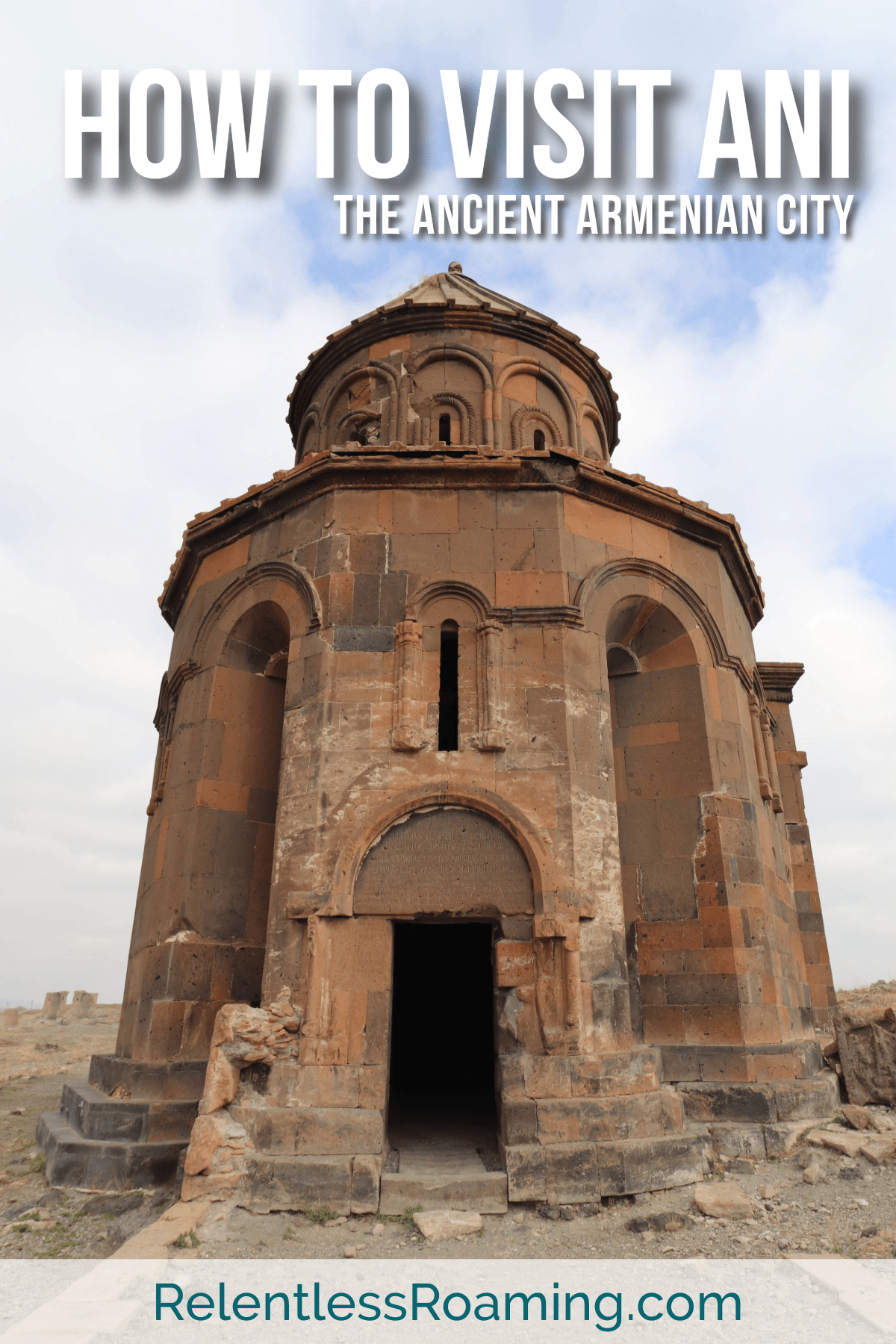How to Visit Ani: the Ancient Armenian Capital City
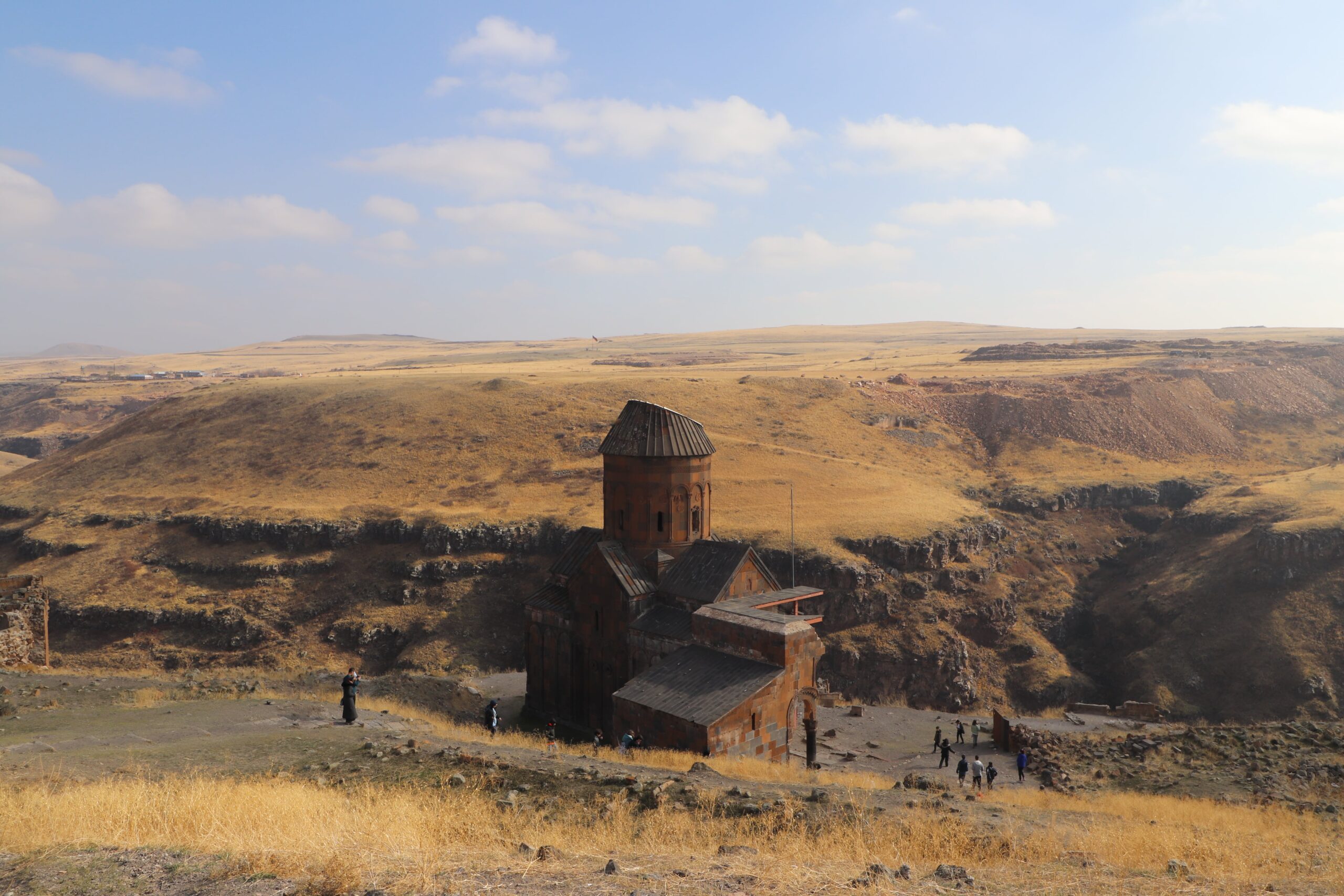

Ani, the medieval capital of Bagratid Armenia, now lays in ruins. The gorge created by the Akhurian river snakes its way beside the city and forms a natural border bringing the once Armenian city into modern day Turkey.
The tuff stone of some of the largest buildings still stand; the pink, orange and black hues of the bricks so characteristic of Armenia. Walk the gravel paths through the site, pop into the various buildings that remain, be amazed by the medieval artwork and inscription, stand in awe looking out over the gorge towards modern day Armenia. So close, but yet so far; the Armenian people lost one of their greatest symbols of pride with the change of borders. And, sadly, it seems that not enough is being done to keep the city alive.
This guide will give you all the info on how to visit Ani, a brief history and other things to do nearby.
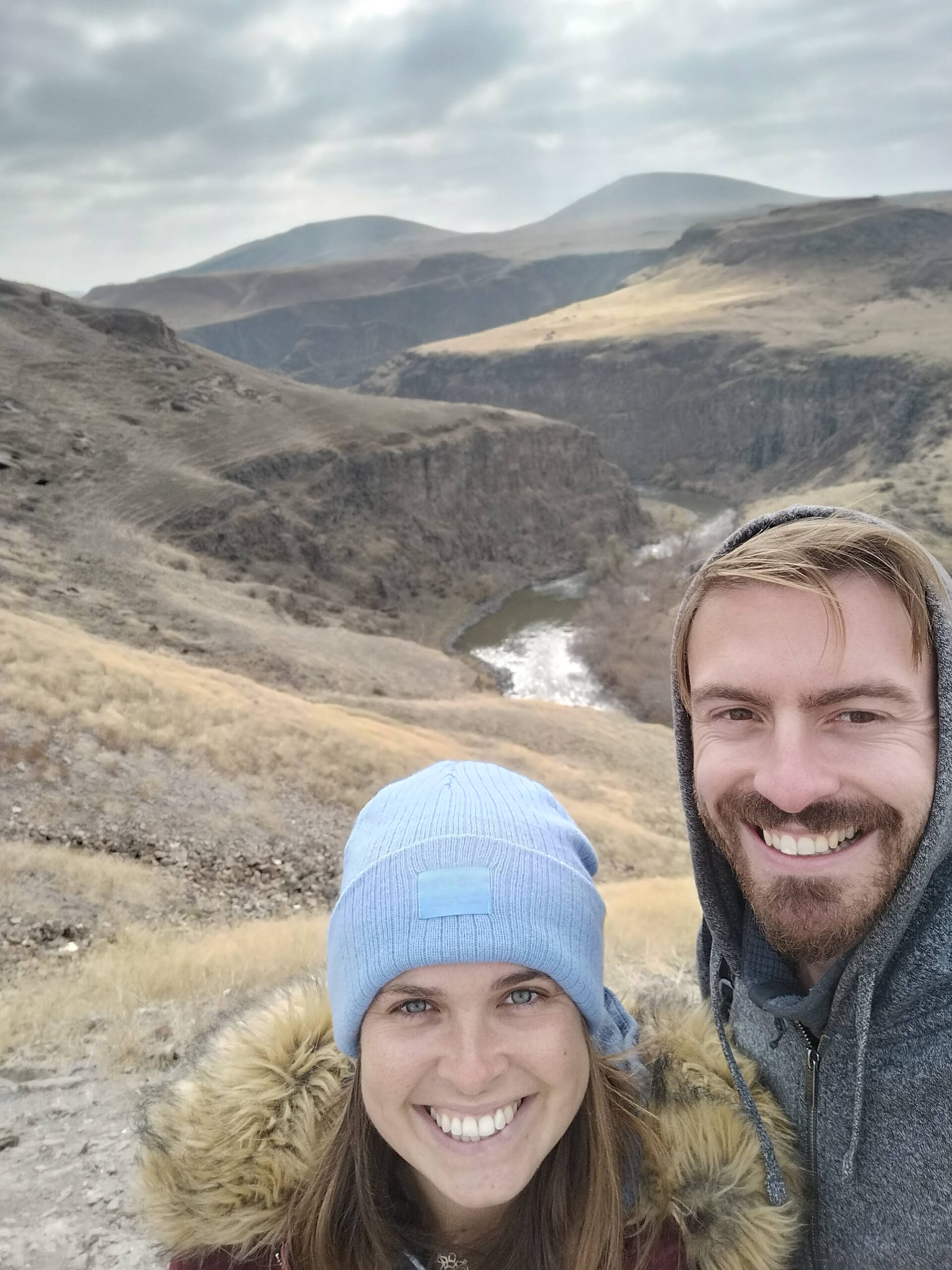

Disclaimer: This blog post may contain affiliate links, which means that if you click and purchase through a link, we may earn a small commission at no extra cost to you. And if you do choose to do this, THANK YOU so much for supporting us! It means that we can continue to create content for you guys. Full disclaimer here.
A Brief History of Ani
Ani was the capital of the Bagratid Armenian kingdom which comprised of modern day Armenia plus modern day Eastern Turkey. The city thrived due to its location along a trade route, and during its time, it was one of the world’s largest cities.
Ani was invaded on many occasions. Seljuk Turks captured the city and slaughtered its population; followed by subsequent invasions by the Kingdom of Georgia and Mongols.
A devastating earthquake hit the region in the 14th century which caused significant damage from which Ani never really recovered. This combined with a change in trade route away from Ani, and the takeover of the Ottoman Empire resulted in the city being completely abandoned by the middle of the 18th century.
Ani was then incorporated into the Russian Empire. The city was looted and damaged by Turks in 1918. Archaeologists managed to rescue some artifacts before the ransacking.
Soon after, the Soviet Union invaded Armenia, and the treaty of Kars was signed determining the borders of Turkey and the three Caucasian Soviet republics – Georgia, Armenia, and Azerbaijan. Ani was not given back to Armenia, and has remained in Turkish territory since.
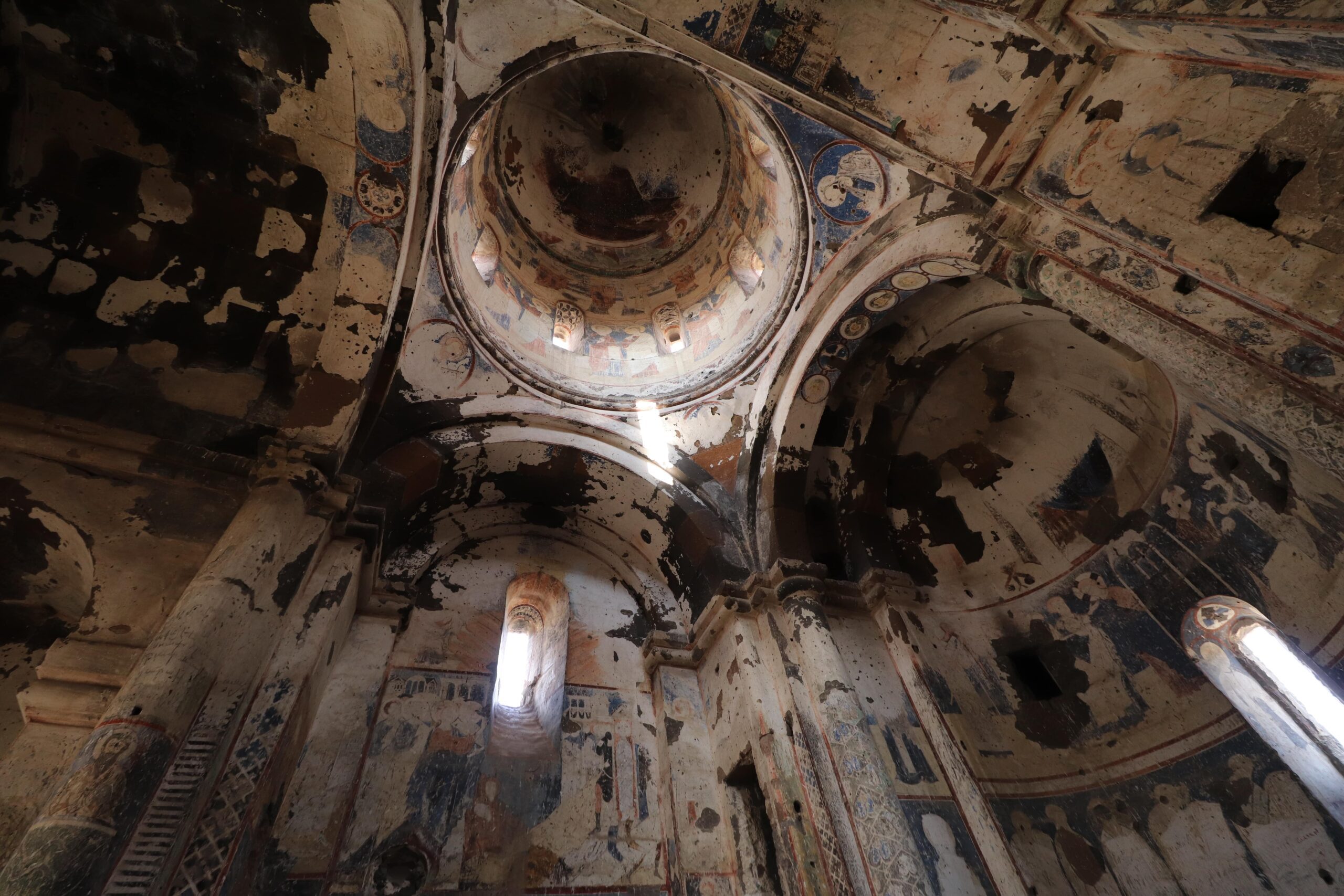

Getting to Ani
The first step is to get yourself to Kars.
Kars is the nearest city and has an airport (KSY) that connects with Istanbul and Ankara.
There is also a train that travels from Ankara to Kars. We haven’t taken this train but you can find out more details on railturkey.org.
We took a bus from Van to Kars. Tickets cost 300 TL in 2022, and the journey took seven hours, leaving Van at 10:00. During this seven hour journey, the bus was stopped on six occasions: either at police checkpoints or being flagged down by police. Yes, you read that right. The bus was stopped basically every hour.
Police would come on to the bus, check our IDs and passports, take them off the bus to presumably run them through a system, and bring them back. The whole thing was pretty tedious, but no one on the bus ran into any issues with the authorities, and we were the only non-locals.
We bought our tickets through ‘Best Van‘, but the bus company that actually drove the route was called Turgutreis. Once you arrive into Kars, there is a free shuttle bus that will take you from the bus station into the city centre. Give the driver a shout when you want to get off.
To get from Kars to Ani, you will need to catch the 10:00 bus from just outside of Sugar Beet Cafe. Head over here, pay for your ticket in cash on the bus. The journey lasts about an hour. The bus waits around and then returns back to Kars, leaving Ani at 13:30.
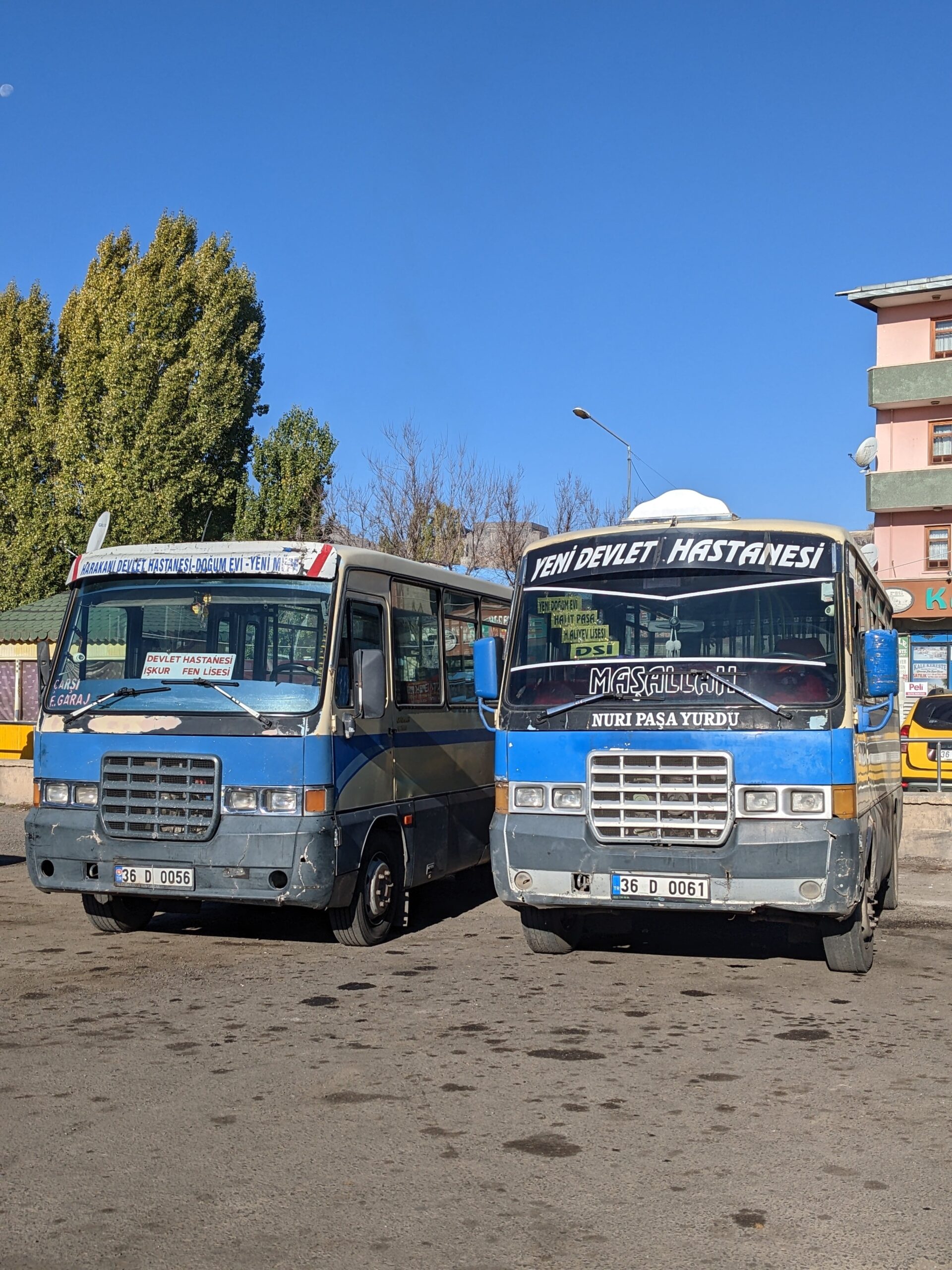

How Long Do I Need to Explore Ani?
By getting the bus to and from Ani from Kars, you have two and a half hours to explore the site. And we found that this really worked out to be the perfect amount of time. We didn’t feel rushed, and even had a little time to buy postcards, a magnet, and slowly sip a cup of cay in the winter sunshine.
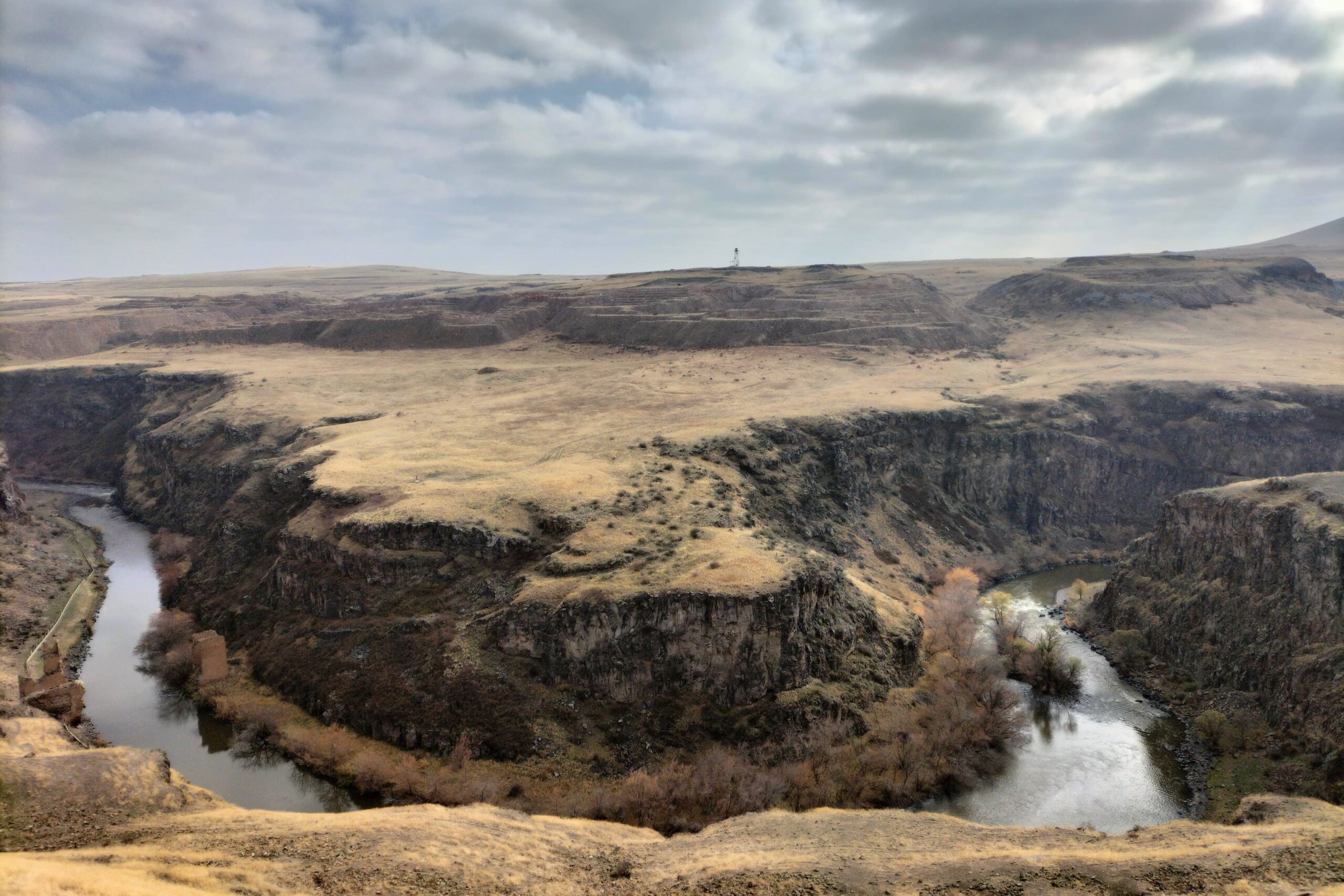

Do I Need a Guide?
Maybe. When we arrived, there weren’t any guides working. We had, however, met an Iraqi Kurd on the bus who seemed to know a lot about Ani and was talking us through bits and pieces. There are a few plaques around the site with information, however, they are very lacking. I feel like so much more could be done to bring this site back to life, and tell Ani’s story!
I made sure that I did plenty of research before and after visiting to get a good grasp of the city’s prominence. Tours could be arranged in Kars to provide you with better insight.
Psst… Booking.com Has a 15% Off Sale!
Planning a last-minute trip? Well, you might have timed it just right!
Booking.com is running a 15% off promotion for many stays before 7th Jan.
The discounted properties have the green ‘Late Escape Deal’ badge!
🛏️ Grab a Bargain! 🛏️
Savvy Traveller Pro Tips 🇹🇷
After exploring Turkey for six weeks, these are our favourite booking tools that we couldn’t travel without!
Entrance Requirements
The entrance fee is around 300 TL. There is no need to buy your ticket in advance as this site is very much off the tourist trail and doesn’t receive hordes of visitors. Up until quite recently, Ani was a heavily monitored city, requiring visitors to apply for permits. Nowadays, you can just walk in without issues as long as you have your passport with you. (We missed this memo and did not take our passports with us! Luckily, there weren’t many people visiting and the police let us enter anyway.) Entry is included with the Turkey Museum Pass.
Ani’s Hotspots
This is the route that we took around Ani. It took us around in a loop so we didn’t end up doubling back on ourselves, except when heading up to the citadel (but that’s unavoidable). Also, we found that the views and buildings were progressively more impressive in this order leaving the best til last.
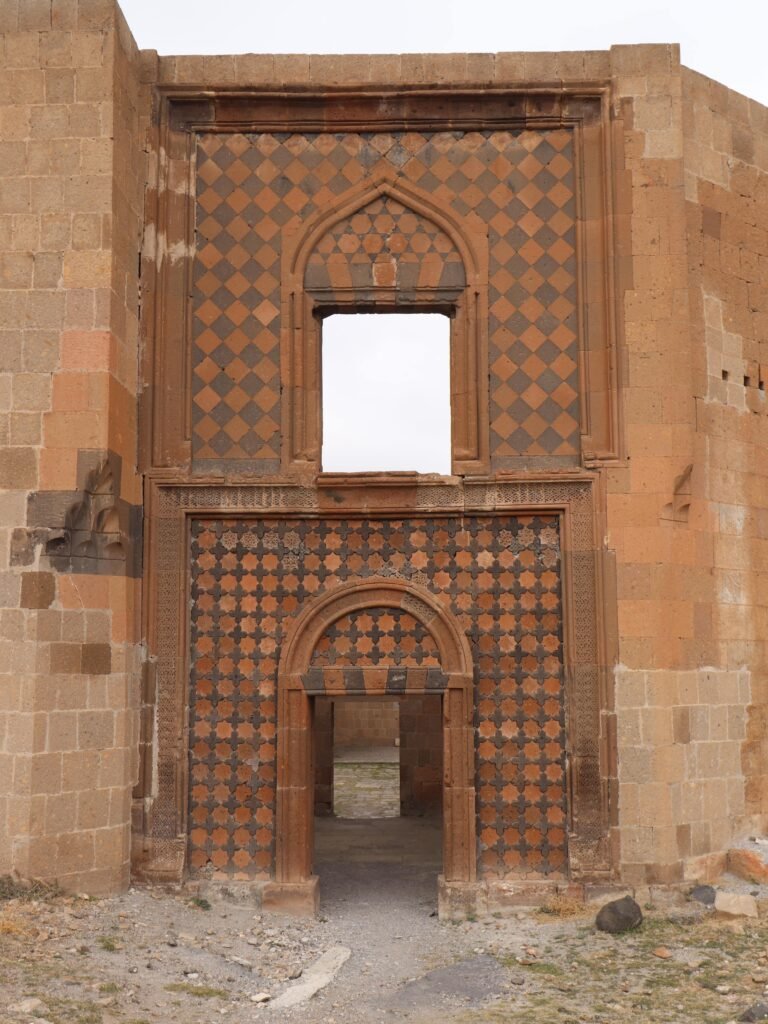

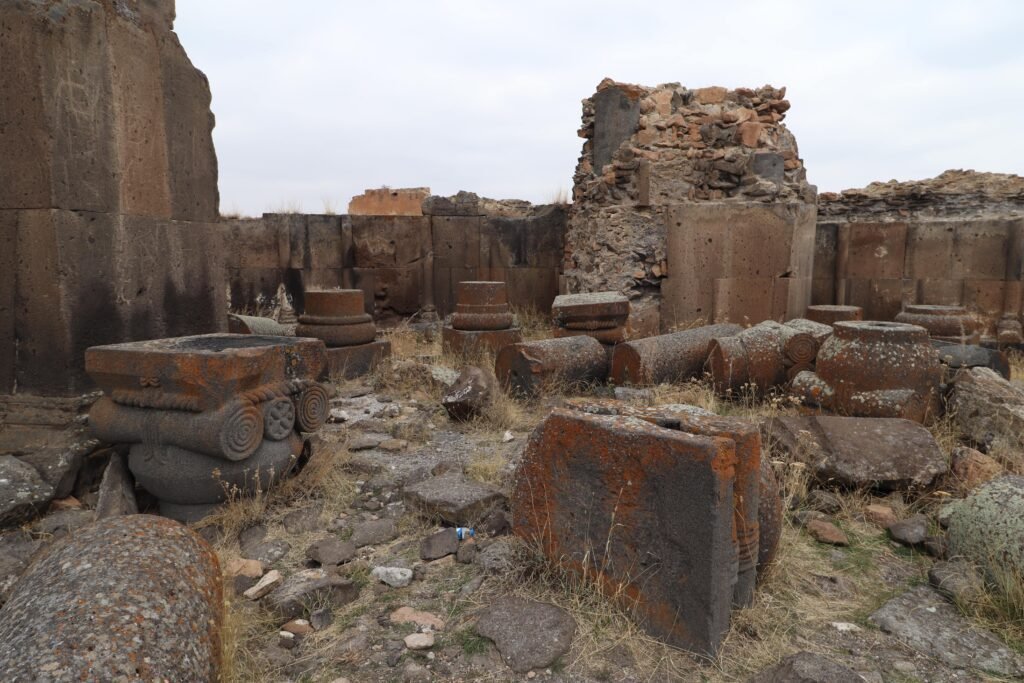

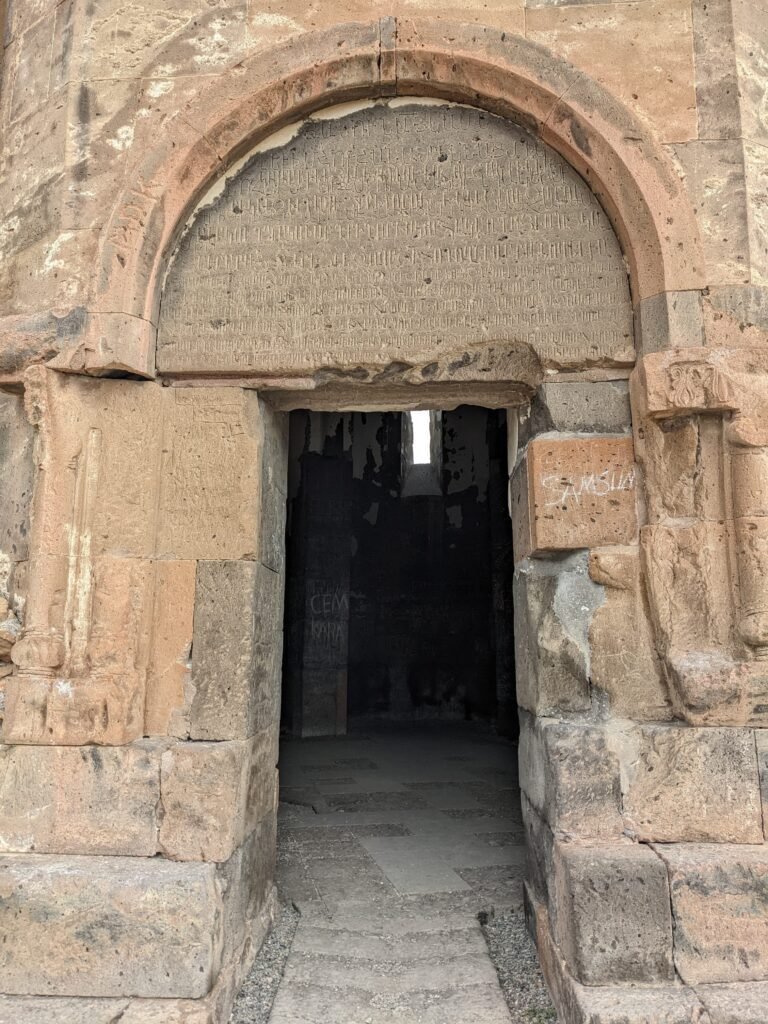

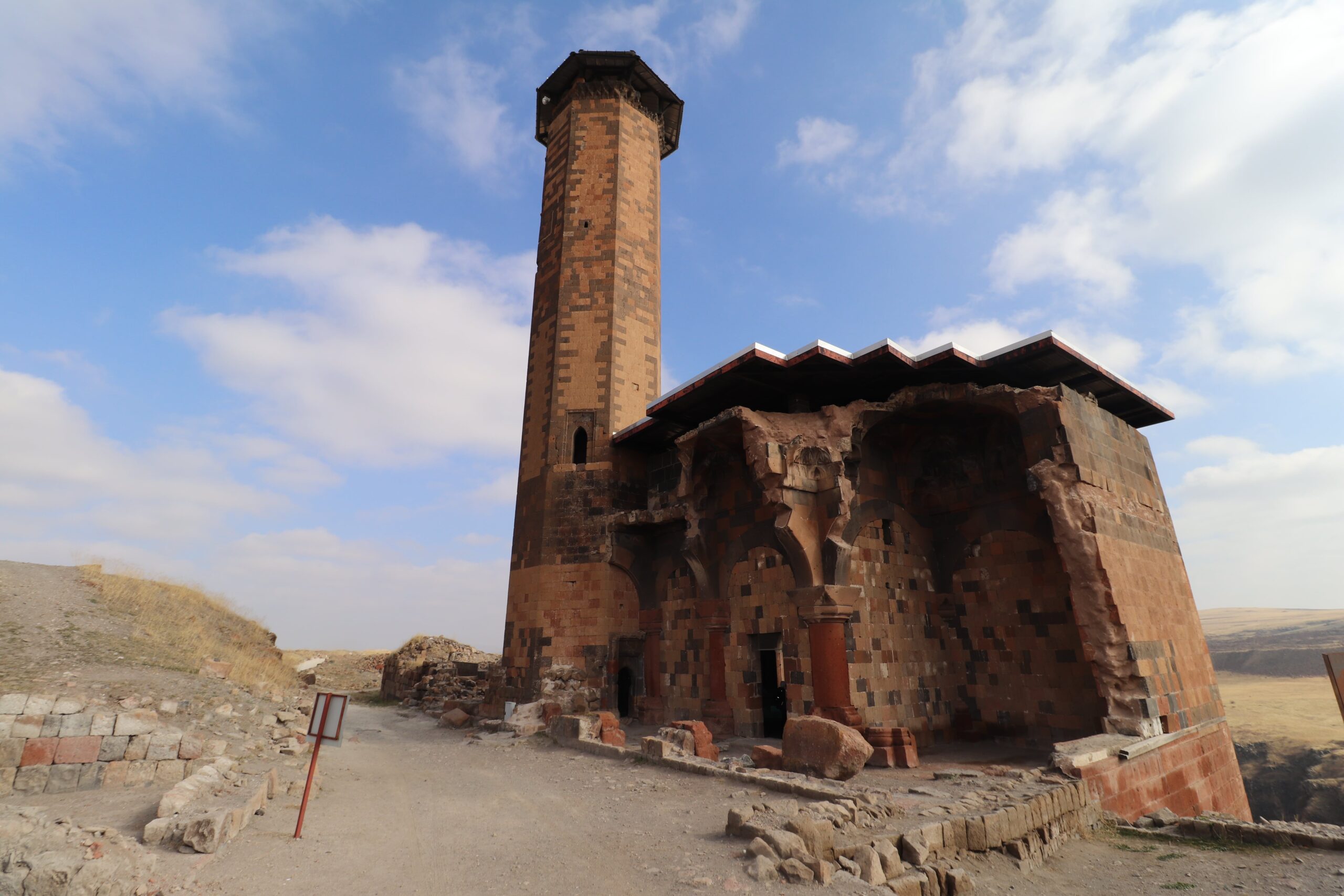

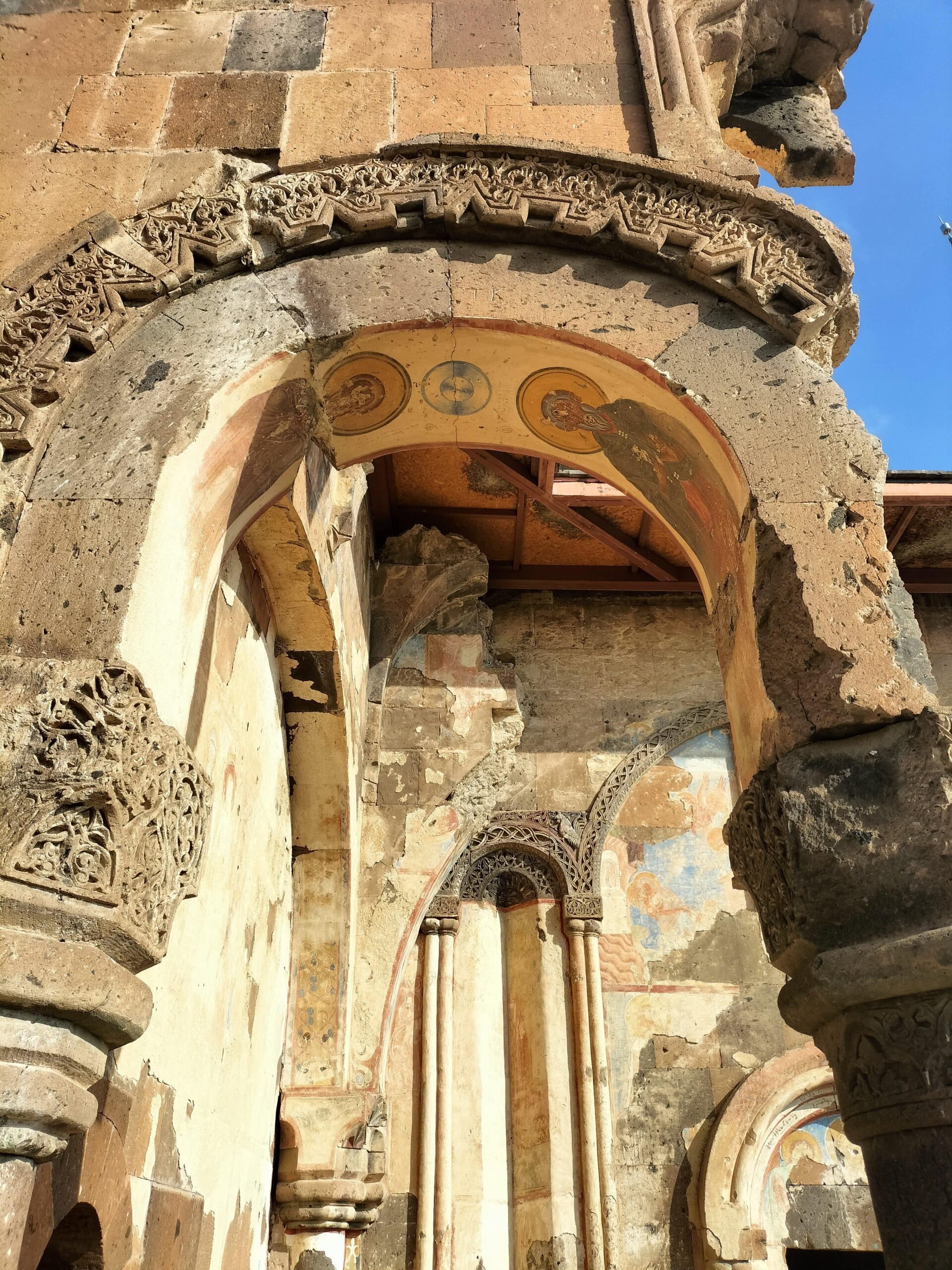

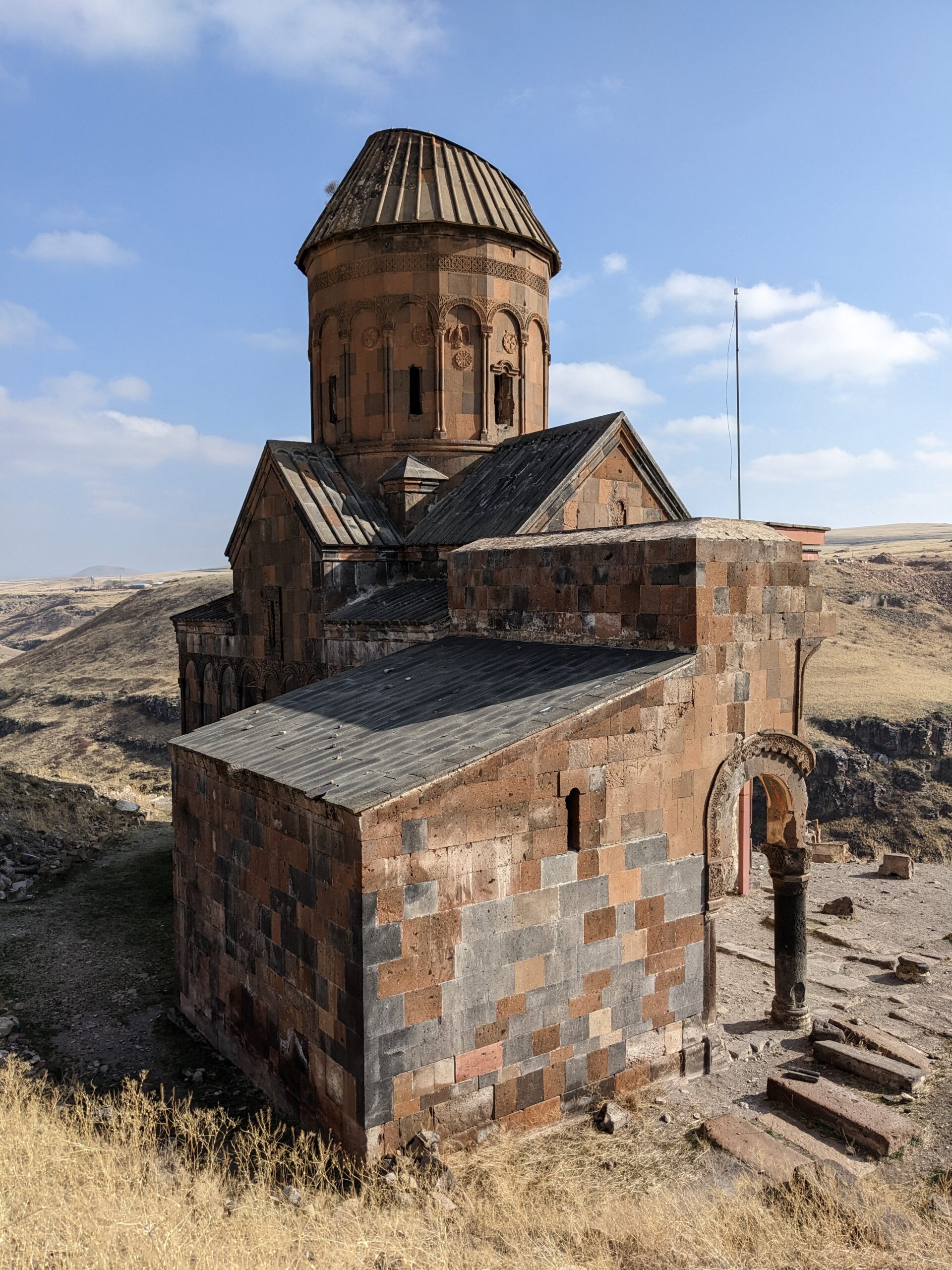

Facilities at Ani
There are toilets, a cafe serving drinks and snacks, and a souvenir shop.
Top Tips for Visiting Ani
Other Things to Do Nearby
After visiting Ani, head back to Kars, and do a little exploration here.
Wander up to Kars fortress for uninterrupted views over the city. Entrance is free.
Stop for coffee at Raskolnikov overlooking the river. This cafe/restaurant is built in an old hamam. (Check out this this blog post on Turkish coffee, so you know what to order.)
Have dinner at Kars Kazevi. We ordered the evelik (local green) and nettle soup which also had lentils and potatoes in. We then shared a plate of hangel which is squares of pasta served with a mound of yoghurt and caramelised onions on top. The meal is served with a plate of pickles and bread, and followed up with a cup of cay. (Take a look at this post on other Turkish vegetarian food to look out for on your Turkey adventure.) This was a really warm and comforting meal to finish off a very cold day of exploring the ruins of Ani.


Maybe head to Georgia next? Our next stop after Kars was Batumi in the Adjara region. Use our detailed guide to travel Kars to Batumi by bus.
Plan more of your trip with these:
- Travel Tips for Turkey: 10 Actually Useful Things to Know
- Things to Do in Turkey: 12 Best Spots for Your Itinerary
- Transport in Turkey: 18 Top Tips for Getting Around by Bus
- Turkish Vegetarian Food: 20 Dishes You Have to Try
- The Ultimate Guide to the Full Turkish Breakfast (plus the best places to eat!)
- How to Drink Turkish Coffee & Decipher the Coffee Menu!
- 8 Tasty Turkish Drinks You Need to Try
- 23 Unique Things to Do in Istanbul
- Travel Guide to Pamukkale Hot Springs in Turkey
- 9 Fascinating Things to Do in Goreme Cappadocia
- 7 Things to Do in Gaziantep: the City of Perfect Pistachios
- 8 Captivating Things to Do in Sanliurfa
- How to Visit Göbekli Tepe
- 6 Best Things to Do in Mardin, Turkey
- How to Travel from Kars to Batumi by Bus
Like it? Save it!
